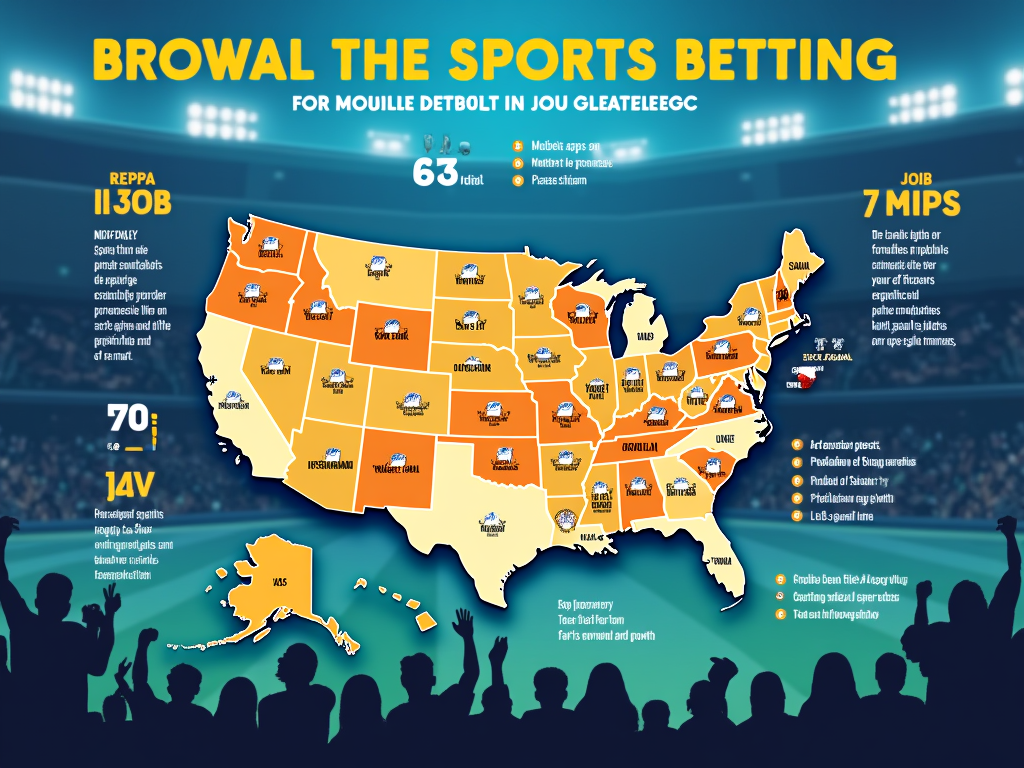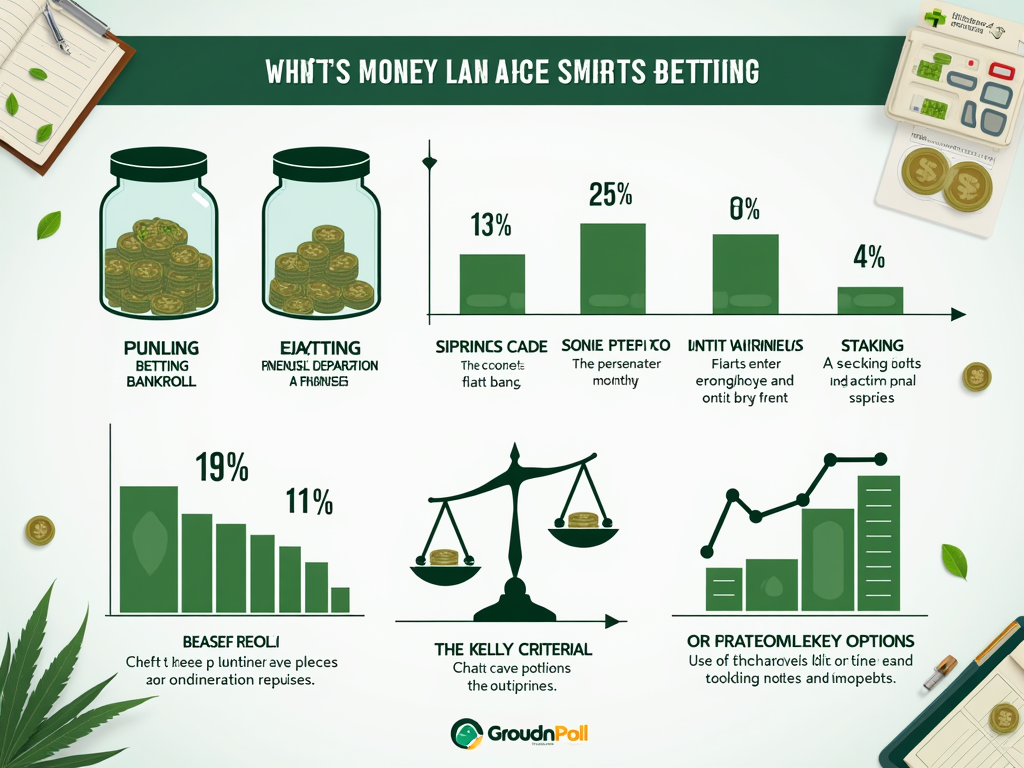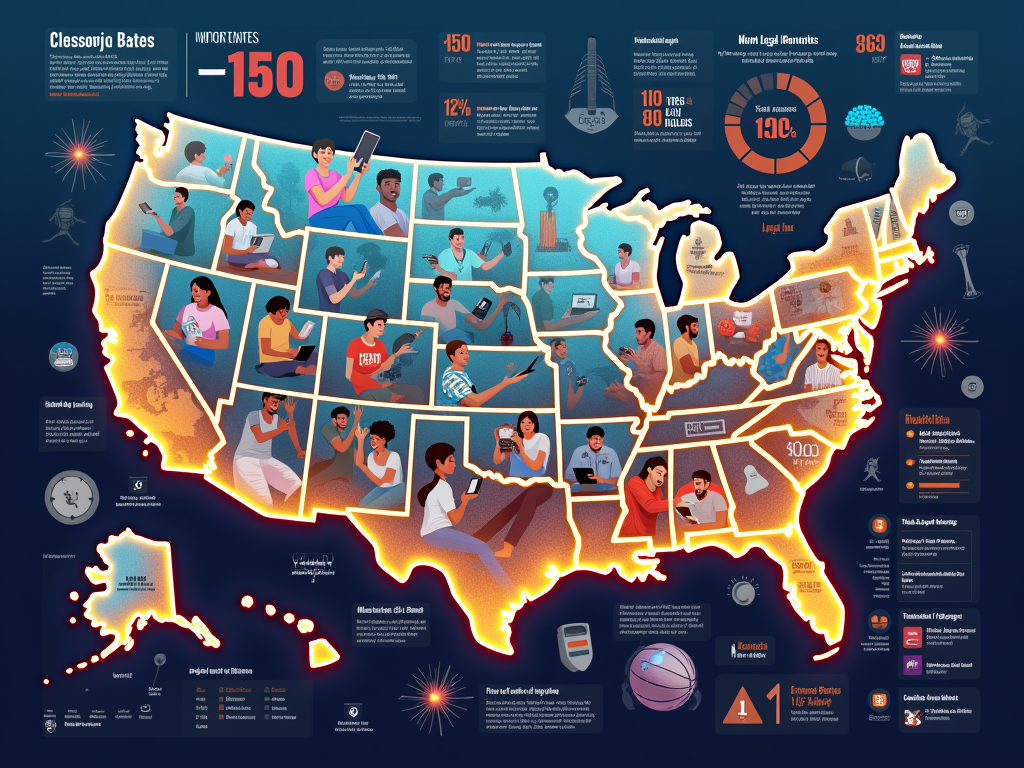Transformation of Sports Betting in America
Sports betting in America underwent a major transformation after the 2018 Supreme Court decision that struck down PASPA (Professional and Amateur Sports Protection Act). This opened the doors for a rapidly expanding, multi-billion dollar industry that now spans numerous states.
The global sports betting market hit $83.65 billion in 2022 and is expected to maintain a robust growth trajectory with a 10.3% compound annual growth rate through 2030. In the United States, more states are adopting both retail and mobile wagering platforms, broadening access and reshaping the betting landscape.
Key Takeaways
- Over 30 states plus Washington, D.C. have legalized sports betting since 2018, ending Nevada’s long-standing monopoly.
- There are different odds formats including American, decimal, and fractional, each with its own way of calculating returns.
- Smart bankroll management is essential—many experts recommend betting only 1-3% of your total funds per wager.
- Common types of bets include:
- Moneyline
- Point spread
- Over/under
- Parlays
- Prop bets
- Winning strategies often rely on:
- Statistical analysis
- Environmental factors
- Comparing odds across sportsbooks
Adapting to an Evolving Market
As the betting landscape grows, both new and experienced bettors need to stay informed. I am dedicated to providing accurate and practical information that balances statistical insight with proven strategies to support smart and informed betting decisions.
The industry’s rapid expansion presents both opportunities and the necessity for responsible gambling practices. With the integration of advanced technology and user-friendly platforms, the modern sports betting experience is more accessible and dynamic than ever before.
This transformation demands continuous adaptation to emerging regulations and technologies, offering a constantly evolving and competitive environment for those involved in sports betting.
The Explosive Growth of Legal Sports Betting in America
The sports betting scene in America changed forever when the Supreme Court struck down PASPA (Professional and Amateur Sports Protection Act) in 2018. This landmark decision opened the floodgates for individual states to legalize and regulate sports wagering, creating a dramatic shift from what was once a Nevada-exclusive market.
Market Size and Expansion
The impact of this decision has been staggering. The global sports betting market reached a valuation of $83.65 billion in 2022, with the U.S. market playing an increasingly significant role in this figure. Looking ahead, the industry shows no signs of slowing down, with projections pointing to a steady 10.3% compound annual growth rate (CAGR) through 2030.
State-by-State Adoption
The momentum behind sports betting legalization has been remarkable. As of late 2023, more than 30 states plus the District of Columbia have embraced legal sports betting. This rapid adoption represents a complete transformation from the pre-2018 era when legal sports betting was largely restricted to Nevada’s borders.
I’ve noticed several key factors driving this widespread acceptance:
- Growing public support for regulated gambling options
- Significant tax revenue potential for state governments
- Creation of new jobs in the betting industry
- Enhanced consumer protections through regulation
- Integration with professional sports leagues
This shift has created exciting opportunities for sports enthusiasts looking to develop effective betting strategies. The regulated environment means better odds, safer transactions, and more transparent operations for bettors.
Each state maintains its own specific regulations and guidelines, creating a varied landscape of betting options across the country. Some states permit only in-person betting at licensed sportsbooks, while others embrace both retail and mobile wagering platforms. This diversity in approaches has led to a rich betting ecosystem that continues to mature and evolve with each passing year.

Understanding Odds and How They Work
Breaking Down Different Odds Formats
Sports betting odds might look confusing at first, but I’ll help simplify them. American odds are common in the United States and use plus (+) and minus (-) symbols. When you see -110, you’ll need to bet $110 to win $100. On the flip side, +150 means a $100 bet would win you $150. Pretty straightforward, right?
Decimal odds are popular in Europe and Australia – they show your total return including your original stake. For example, odds of 1.91 mean a $10 bet returns $19.10 total (your $10 stake plus $9.10 profit). These are super easy to calculate since you just multiply your stake by the decimal number.
Fractional odds, favored in the UK, display as ratios like 10/11. This means for every $11 you bet, you’ll win $10 in profit. I find these take a bit more mental math but they’re still manageable once you get the hang of them.
Understanding Probability and Vigorish
Let’s talk about what these odds really mean in terms of probability. To convert odds to implied probability, I use a simple calculation. For negative American odds, it’s [negative odds / (negative odds + 100)] × 100. So -110 odds suggest a 52.4% chance of winning.
The house always builds in their profit margin, known as vigorish or juice. On standard -110 lines, there’s typically a 4.55% vigorish. This means you need to win more than 52.4% of your bets just to break even.
Here are the key indicators that tell you whether you’re betting on a favorite or underdog:
- In American odds, minus (-) shows the favorite, plus (+) indicates the underdog
- Lower decimal odds (like 1.50) point to favorites, higher numbers (like 3.00) signal underdogs
- Fractional odds showing less profit than stake (5/6) mark favorites, while higher profit than stake (2/1) marks underdogs
This whole system of odds ties directly into proper bankroll management strategies, which I can’t stress enough as crucial for long-term betting success. Just like in games such as baccarat, understanding the odds helps you make smarter betting decisions and manage your money more effectively.
Popular Betting Types and How to Place Them
Sports betting offers various ways to put your money down, and I’ll help you understand the most common bet types you’ll encounter. Just like learning smart strategies in blackjack, knowing these betting options can improve your chances of success.
Essential Betting Types You Should Know
Moneyline bets are the simplest form of sports wagering – you’re picking who’ll win the game. For example, if the Lakers are listed at -150, you’ll need to bet $150 to win $100. Meanwhile, their opponents at +130 would pay $130 on a $100 bet.
Point spread betting adds excitement by creating a handicap between teams. When the Chiefs are -7.5 against the Broncos, they need to win by 8 or more points for your bet to pay off. Similar to how betting systems in baccarat require strategy, point spread betting needs careful analysis of team performance.
Over/Under (totals) betting focuses on the combined score of both teams. If a basketball game’s total is set at 220.5, you decide if the actual score will be higher or lower. This bet type lets you profit from your scoring predictions without picking a winner.
Here are the other popular betting options you’ll encounter:
- Parlays: Combine multiple bets for bigger payouts – like betting both the Yankees and Red Sox to win. Remember, all picks must hit to win.
- Props: Bet on specific events within a game, such as first touchdown scorer or total player rebounds.
- Futures: Place long-term bets on season outcomes like championship winners or MVP awards.
- Live betting: Make wagers during the game as odds shift in real-time.
Just as managing your bankroll is crucial in blackjack, setting proper bet sizes for each type is essential. Parlays offer tempting payouts but carry higher risk. Props can provide value if you’ve done your homework on player tendencies.
The odds format varies by region – American odds (+150), decimal (2.50), or fractional (3/2) all represent the same payout. I’d suggest starting with straight bets like moneylines or spreads before trying more complex wagers. This approach helps build your understanding while limiting risk as you learn the nuances of each betting type.
Keep detailed records of your bets across different types to identify where you’re most successful. Much like tracking your wins and losses in baccarat, this data will guide your future betting strategy and help you focus on profitable areas.
Smart Money Management for Long-term Success
Proper bankroll management forms the foundation of successful sports betting. Just as I’ve learned from years of experience with effective bankroll management strategies in casino games, having a dedicated betting fund separate from your living expenses is crucial.
Essential Bankroll Management Principles
First, set aside a specific amount of money exclusively for betting – this becomes your bankroll. This should be money you can afford to lose without impacting your daily life or financial obligations. Think of it as an entertainment budget, similar to what you might spend on other hobbies.
The unit betting system stands out as one of the most reliable approaches to managing your wagers. I recommend using 1-3% of your total bankroll as one unit per bet. For example, with a $1,000 bankroll, each unit would be $10-30. This systematic approach helps protect your funds during inevitable losing streaks while maintaining enough capital to recover.
Let’s break down the key components of successful money management in sports betting:
- Start with a fixed bankroll that’s completely separate from essential funds
- Stick to betting 1-3% of your total bankroll per wager
- Track all bets and monitor your bankroll fluctuations
- Maintain consistent bet sizes regardless of recent results
- Reassess your bankroll monthly and adjust unit sizes accordingly
The debate between flat betting and percentage-based staking deserves attention. While flat betting keeps things simple by wagering the same amount each time, percentage-based staking adjusts your bet size as your bankroll changes. I’ve found that flat betting works better for beginners, while percentage staking can be more profitable for experienced bettors who understand advanced betting control strategies.
The Kelly Criterion offers a mathematical approach to optimal bet sizing, calculating the ideal percentage of your bankroll to wager based on perceived edge and odds. However, I suggest using a fractional Kelly (usually 1/4 or 1/2) to reduce variance and protect your bankroll.
One critical rule: never chase losses by increasing your bet size. This emotional response to losing leads to bigger losses and can deplete your bankroll quickly. Instead, stick to your predetermined unit size regardless of recent results. Poor money management, particularly chasing losses, remains the primary reason most sports bettors fail long-term.
By implementing these money management principles, you’ll be better positioned for sustained success in sports betting. Remember, successful betting isn’t about making huge profits quickly – it’s about making smart, calculated decisions that compound over time while protecting your bankroll.
Think of your betting bankroll as a business investment that needs careful management and strategic planning. Just as a business owner wouldn’t risk their entire capital on a single venture, you shouldn’t risk a large portion of your bankroll on a single bet, no matter how confident you feel about it.

Research Strategies to Find Betting Value
Advanced Statistical Analysis
Finding real value requires looking beyond basic statistics. I’ve found that digging into specific performance metrics gives a much clearer picture than simple win-loss records. For NFL games, home field advantage typically adds 2-3 points to the spread – but that’s just the starting point.
Let’s break down the key research components that can help identify valuable betting opportunities:
- Advanced offensive and defensive efficiency ratings
- Red zone conversion percentages
- Third-down success rates
- Turnover differentials
- Time of possession statistics
- Special teams performance metrics
Critical External Factors
The timing and context of games can dramatically impact outcomes. I pay careful attention to several situational elements that many bettors overlook:
- Key player injuries and their ripple effects on team strategy
- Weather forecasts, particularly for outdoor sports
- Travel schedules and rest periods between games
- Team motivation factors (playoff implications, rivalries)
- Historical performance in similar situations
- Recent head-to-head matchup results
My consistent approach to identifying betting value also includes actively avoiding common mental traps. For instance, don’t let recent performance overshadow longer-term trends (recency bias) or cherry-pick information that supports your preferred outcome (confirmation bias).
Comparing odds across multiple licensed sportsbooks is essential – even small differences in lines can significantly impact your long-term results. I recommend setting up accounts with several legal operators in your jurisdiction to take advantage of varying odds and promotional offers that can boost your bankroll.
The sports betting landscape changes rapidly, so staying current with news and updates is crucial. I dedicate time each day to reviewing injury reports, tracking line movements, and analyzing any new information that might affect upcoming games. This consistent research routine helps spot valuable opportunities before they disappear.
Remember that proper research takes time – there’s no shortcut to developing a winning strategy. By combining thorough statistical analysis with careful consideration of external factors, you’ll be better positioned to identify true betting value. Just ensure you’re working with licensed operators who offer secure, regulated betting options.
Sources:
Grand View Research – “Sports Betting Market Size, Share & Trends Analysis Report”
National Council on Problem Gambling – “Help & Treatment FAQ”
American Gaming Association – “State Gaming Map”
ESPN – “Betting”
Action Network





